ReINVENTING
Islands
SINK OR SWIM?
Islands innovate to thrive in a high-stress world
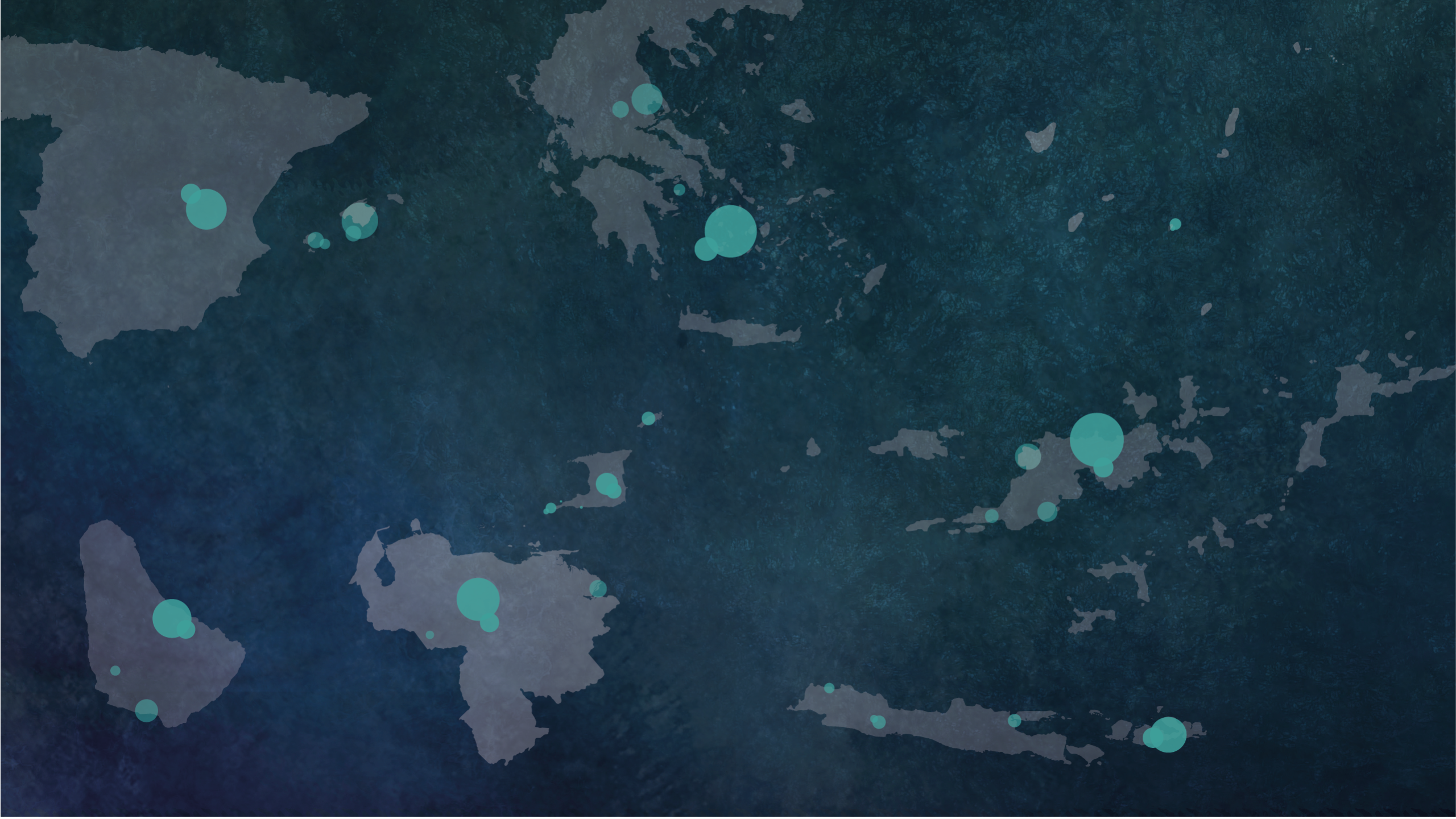
When the Caribbean island of Barbuda was battered by Hurricane Irma last September, about 90 percent of homes were destroyed or damaged, and the entire population had to be evacuated.
Since the school year ended last month, the pace of families returning from neighbouring Antigua - where many lodged with relatives or in state-run centres - has picked up, even though reconstruction is unfinished, the Red Cross said.
Almost half of Barbuda's roughly 1,800 people have gone back, as the cash-strapped, twin-island nation works on ways to protect people from future disasters while waiting for promised aid funds to rebuild homes - which could take years.
"It's going to be a long and painful process," Antigua and Barbuda Prime Minister Gaston Browne told the Thomson Reuters Foundation.
"We just have to rely mostly on our resources, and to find creative ways to generate income to continue the recovery efforts."
In the face of serious and growing threats, experts detect a sea change in many of the world's 57 small island states and other remote island economies that share development challenges.
They are finding innovative alternatives to lurching from one crisis to the next - whether the problem is extreme weather, mass tourism, plastic waste, water shortages or migration.
Barbuda, aware it will take time to get back on its feet even as this year's hurricane season began in June, aims to stay safer in future - like many of its Caribbean neighbours.
Brennan Banks, Red Cross operations manager for the Irma response, said the aid agency plans to build a new office on Barbuda that can double up as an emergency shelter.
It is also offering free first-aid training to locals and fixing up rainwater-collection systems, while working with the government to improve early warning on the two islands.
Such solutions - often developed at least partly with islands themselves - are already improving lives, and protecting communities and environments on a small scale.
But their fledging efforts need far more funding to make a difference - and lessons learned in these living laboratories must be shared widely, say officials and resilience experts.

"We need to figure out how to give a hand up to those that are going to struggle."
Kate Brown, Global Island Partnership
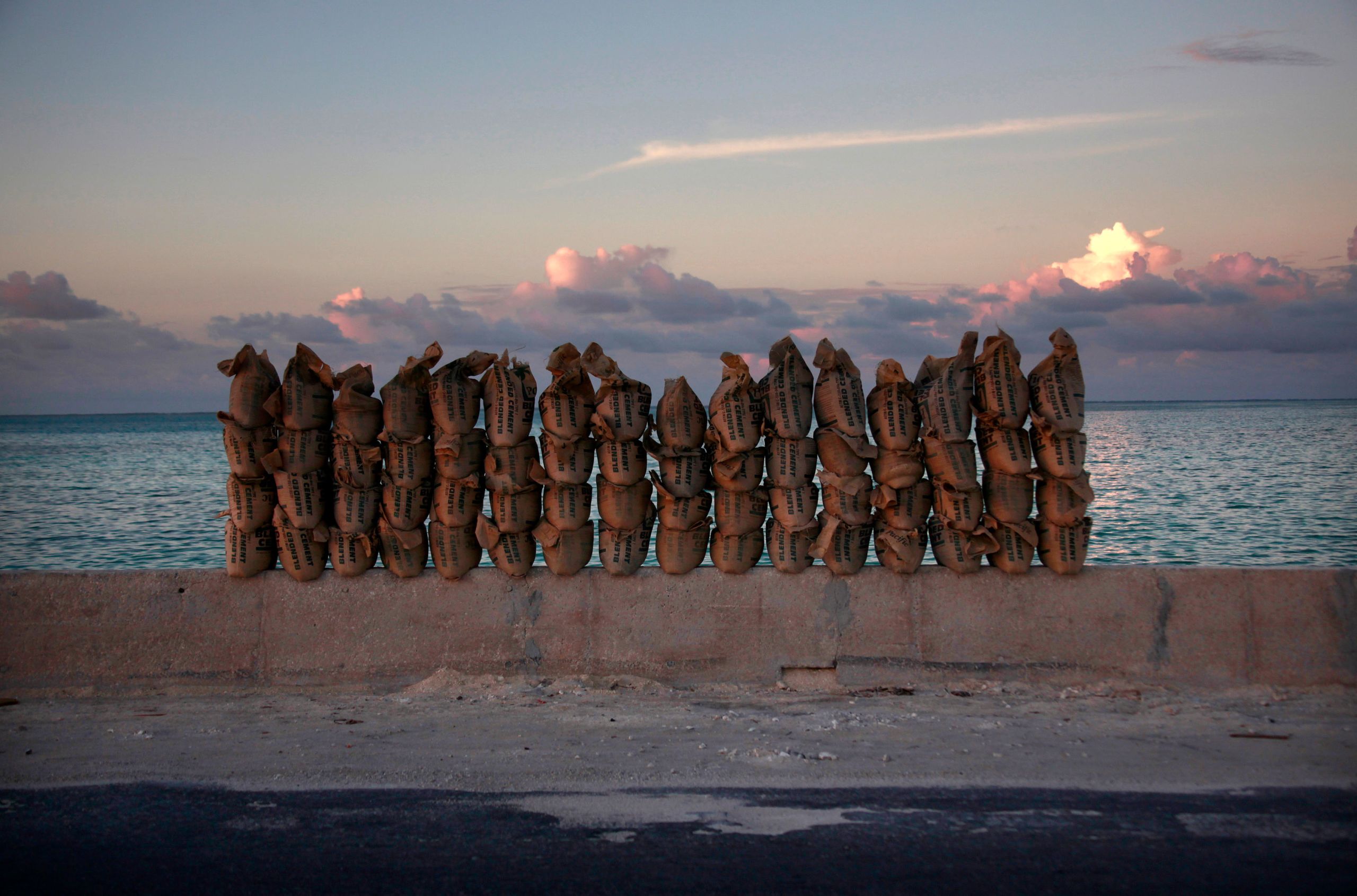
SHELTER IN A STORM

Hugh Riley, secretary-general of the Caribbean Tourism Organization, believes the region is better prepared for this year's hurricane season, even if it is still vulnerable.
"Every time we have an incident of some kind, we learn from it," he said. "The whole business of rebuilding stronger has resonated with us, rebuilding better has resonated with us, rebuilding smarter has resonated with us."
Recent improvements include better government coordination, communications systems that work more smoothly, and faster evacuation plans, he said.
According to a June report from the World Bank, building back from a disaster stronger, faster and in a way that includes everybody can yield major dividends for small island nations.
Doing so would reduce losses in people's wellbeing by an average 59 percent across a sample of 17 island states, it said, compared with 31 percent for all 149 countries in the study.
For Antigua and Barbuda, the reduction would be as large as 78 percent.
Co-author Stephane Hallegatte said the benefits of reconstruction that also protects against future disasters are comparatively large for small islands because they face a high level of risk and exposure to storms and other natural threats.
Many tend to have low-quality housing unable to resist even moderate hazards, the World Bank economist noted.
"There is a lot of potential for improvement," he said. "There are very cheap opportunities."
Those can be as simple as giving local people who repair their own homes tougher roofing materials, and teaching them how to attach the roof more firmly so it stays on in high winds.
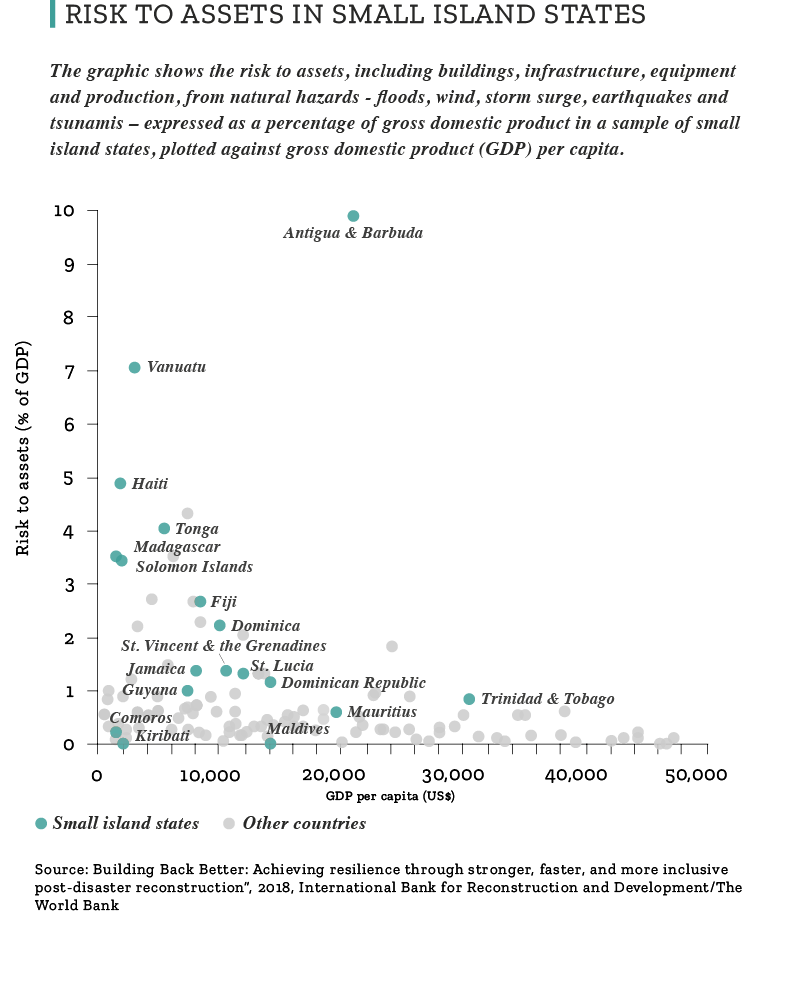
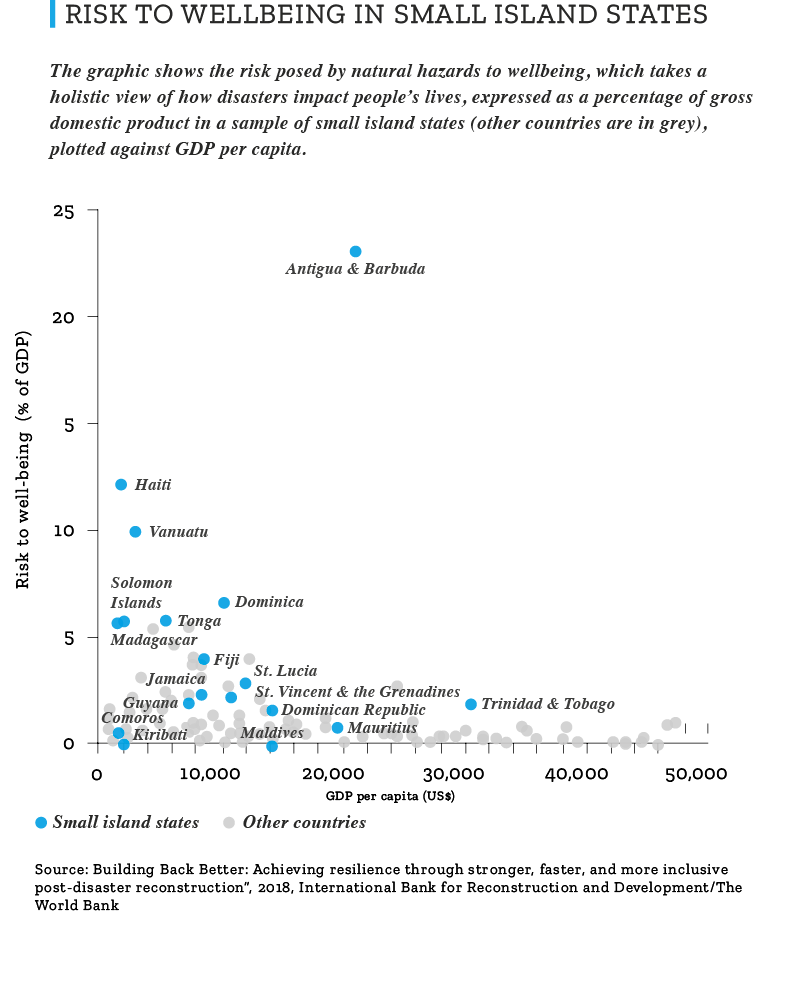
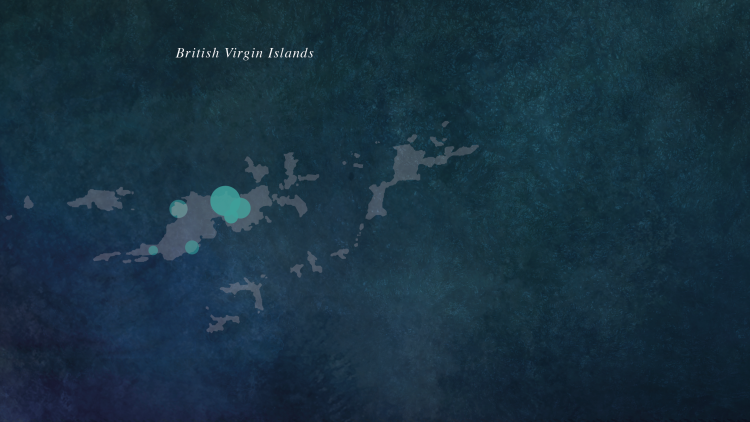

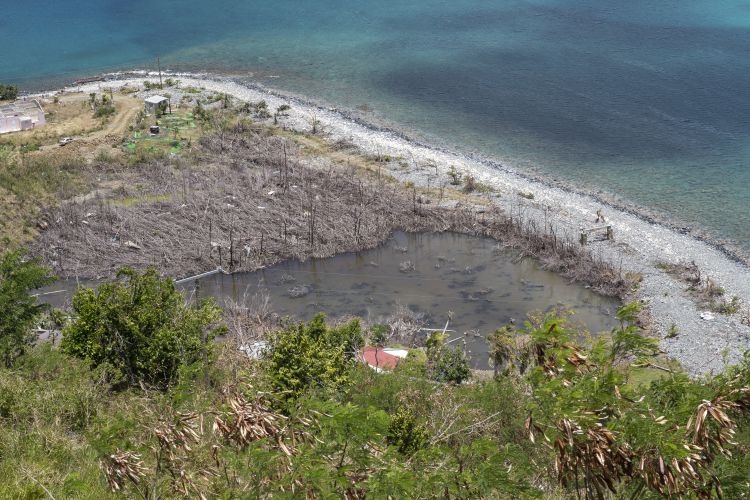
A filled-in wetland on the coast of Cane Garden Bay is seen in the British Virgin Islands, a British overseas territory in the Caribbean, June 1, 2018. The area was damaged by Hurricane Irma in September 2017. Thomson Reuters Foundation/Sebastien Malo
A filled-in wetland on the coast of Cane Garden Bay is seen in the British Virgin Islands, a British overseas territory in the Caribbean, June 1, 2018. Thomson Reuters Foundation/Sebastien Malo
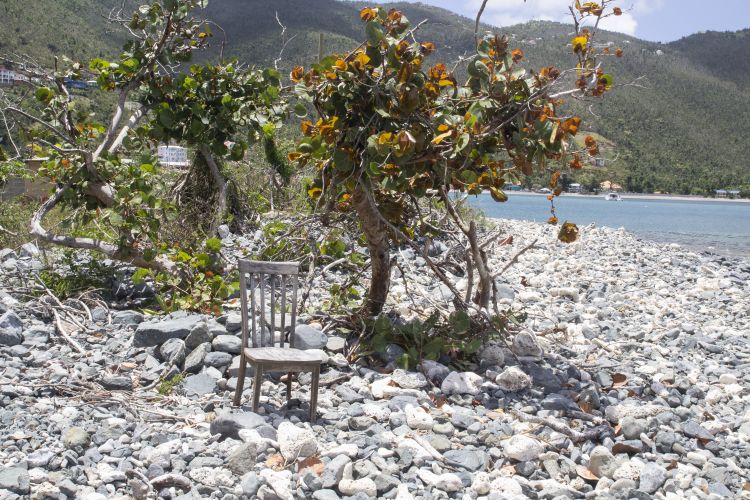
A chair stands on top of stones on the coastline of Cane Garden Bay in the British Virgin Islands, a British overseas territory in the Caribbean, June 1, 2018. The area was damaged by Hurricane Irma in September 2017. Thomson Reuters Foundation/Sebastien Malo
A chair stands on top of stones on the coastline of Cane Garden Bay in the British Virgin Islands, a British overseas territory in the Caribbean, June 1, 2018. Thomson Reuters Foundation/Sebastien Malo
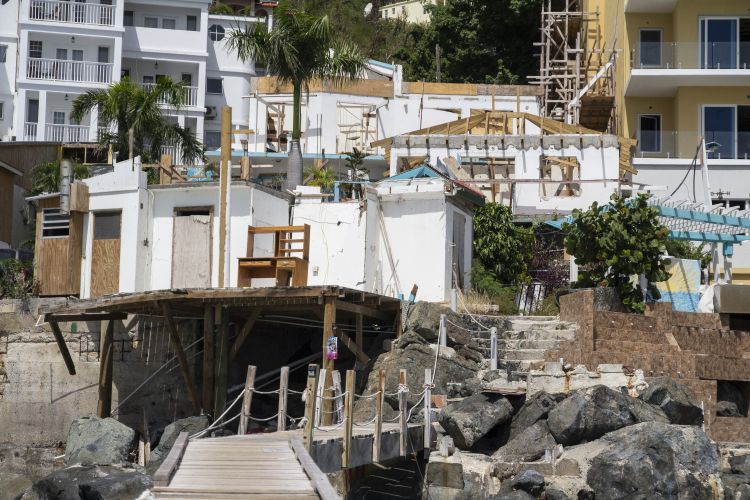
Buildings destroyed when Hurricane Irma hit in September 2017 are seen in the British Virgin Islands, a British overseas territory in the Caribbean, June 2, 2018. Thomson Reuters Foundation/Sebastien Malo
Buildings destroyed when Hurricane Irma hit in September 2017 are seen in the British Virgin Islands, a British overseas territory in the Caribbean, June 2, 2018. Thomson Reuters Foundation/Sebastien Malo
When the British Virgin Islands were blasted by Hurricane Irma in September, more than a third of the territory's 7,000 homes were destroyed or sustained major damage, authorities say.
Construction workers have flocked in from all corners of the Caribbean, working marathon shifts to rebuild.
But materials - from windows to plywood and galvanised roofing – are only arriving in dribs and drabs from Puerto Rico and the U.S. mainland, with delays of up to three months.
The government is working on a new building code tailored to more extreme weather, and has set up a $15-million assistance programme to help lagging residents build back.
Yet some in the relatively affluent British overseas territory, which has a population of just 32,000, are falling through the cracks.
"It's as if the hurricane happened yesterday," said 55-year-old government employee Albert Wheatley, surveying the debris of his pink wooden house now overgrown with weeds. "And I don't know when this will change."
One way to cut long waits for financial help after a disaster is to use social welfare systems to channel cash to recipients, said the World Bank's Hallegatte.
After top-strength Cyclone Winston hit Fiji in February 2016, the government used its three main social assistance programmes to deliver top-up payments, equivalent to three months of regular benefit, to help residents recover.
But many small island states have "very little" in terms of social welfare, Hallegatte noted.
Disasters can trigger the establishment of such schemes, however, and the World Bank is now seeing an upsurge in government interest, he said.
"If there is one place on Earth where you really want to design your social protection system considering natural disasters ... that will be small islands," he added.
Resilience advisor Stewart Sarkozy-Banoczy said helping islands withstand the pressures they face requires a broad view, encompassing everything from nature and culture, to economics and the law.
The Island Resilience Initiative he leads is working with Palau, the Marshall Islands and Fiji in the Pacific to track their progress towards the global development goals agreed by the 193 U.N. members in 2015, and decide on priority projects.
The aim is to pave the way to an approach "much more angled on resilience and 'precovery' rather than constantly talking about recovery" after disasters, said Sarkozy-Banoczy.
In the British Virgin Islands resort of Cane Garden Bay, the onslaught of Hurricane Irma made residents realise rapid development to cater for mass tourists disgorged by cruise ships had damaged their natural defences, putting them in harm's way.
They have since formed a volunteer committee to restore coral reefs, wetlands, mangroves and ponds that trap rainfall running off hillsides, to protect the village from future floods and storms and preserve its natural beauty.
"You have to have a balance, or you lose what you love," said local celebrity Quito Rymer, a reggae singer-songwriter now rebuilding his restaurant and hotel wrecked by the hurricane. "We have decided to take things
in our hands."
CLIMATE CHALLENGES

"If there is one place on Earth where you really want to design your social protection system considering natural disasters ... that will be small islands."
Stephane Hallegatte, World Bank
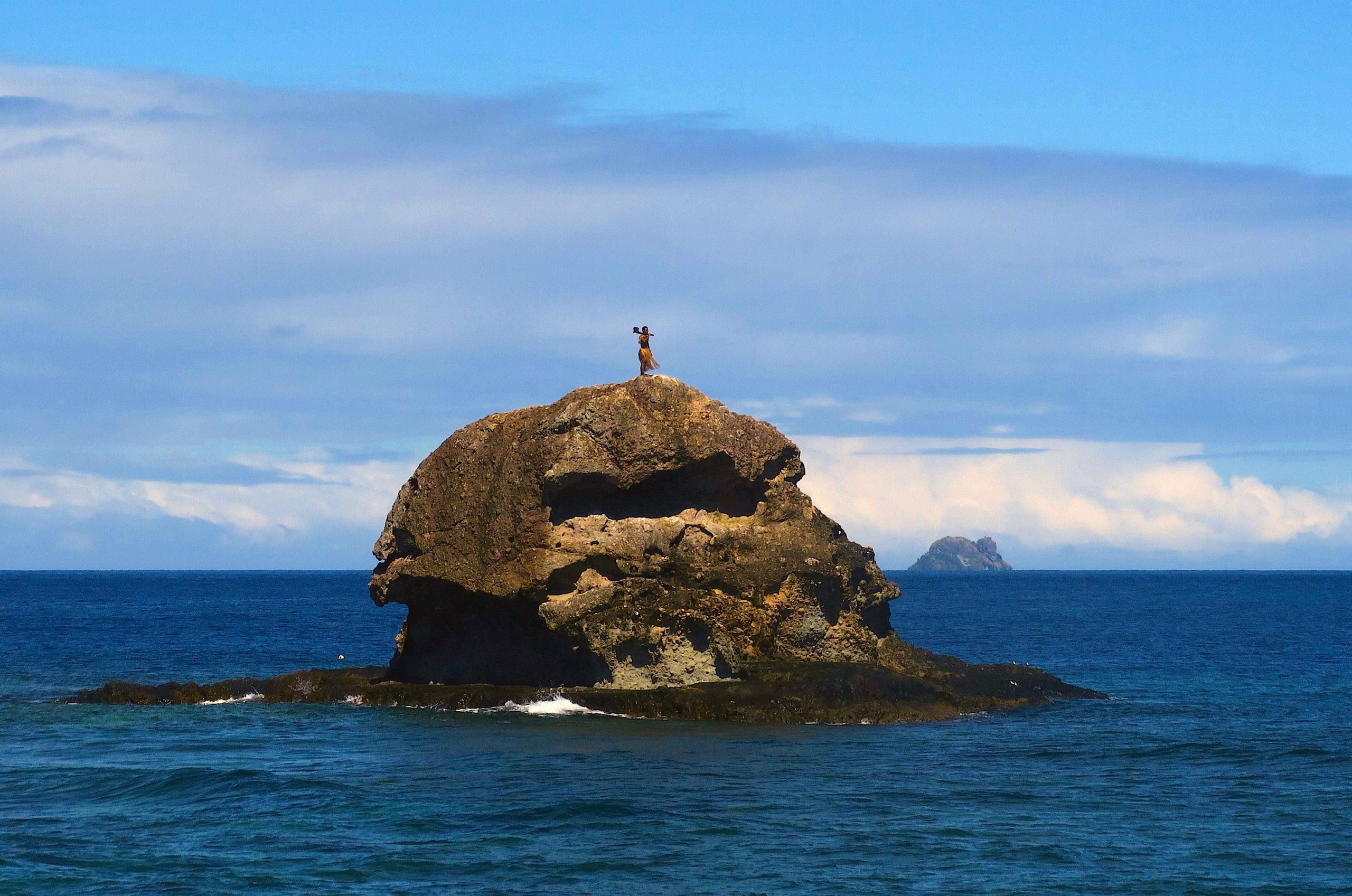
Scientists say warmer air and warmer seas around the globe are increasing rainfall and wind speed in storms - and may have intensified the two top-strength hurricanes that battered the Caribbean last year, causing about 235 direct deaths and losses estimated at $130 billion.
In its latest flagship report published in 2014, the Intergovernmental Panel on Climate Change pointed to rising sea levels as one of the most widely recognised climate change threats to low-lying coastal areas on islands and atolls.
Combined with extreme events like storm surges, it identified "severe sea flood and erosion risks" for islands, with saltwater degrading groundwater supplies.
Other risks from hotter seas include increased coral bleaching and reef damage, which could undermine coastal protection, fisheries and tourism, hurting island communities and costing jobs, scientists said in the report.
Mindful of those risks, some islands in the Caribbean - the world's most tourism-dependent region - are looking beyond beach holidays for fresh ways to entice tourists, from music festivals to fertility vacations and sports camps.
Kate Brown, executive director of the Global Island Partnership (GLISPA), an alliance spearheaded by island leaders, believes many islanders are painfully aware of climate change and wider environmental threats.
In Vanuatu, Palau and the Seychelles, for example, they are already acting to manage the risks - whether by introducing locally managed marine reserves or banning plastic bags and straws, she said.
"You can go to a village virtually anywhere, and they understand that climate change is impacting them," she added.
"Heaps of changes are being made ... There has been a big shift away from waiting for other people to do things."
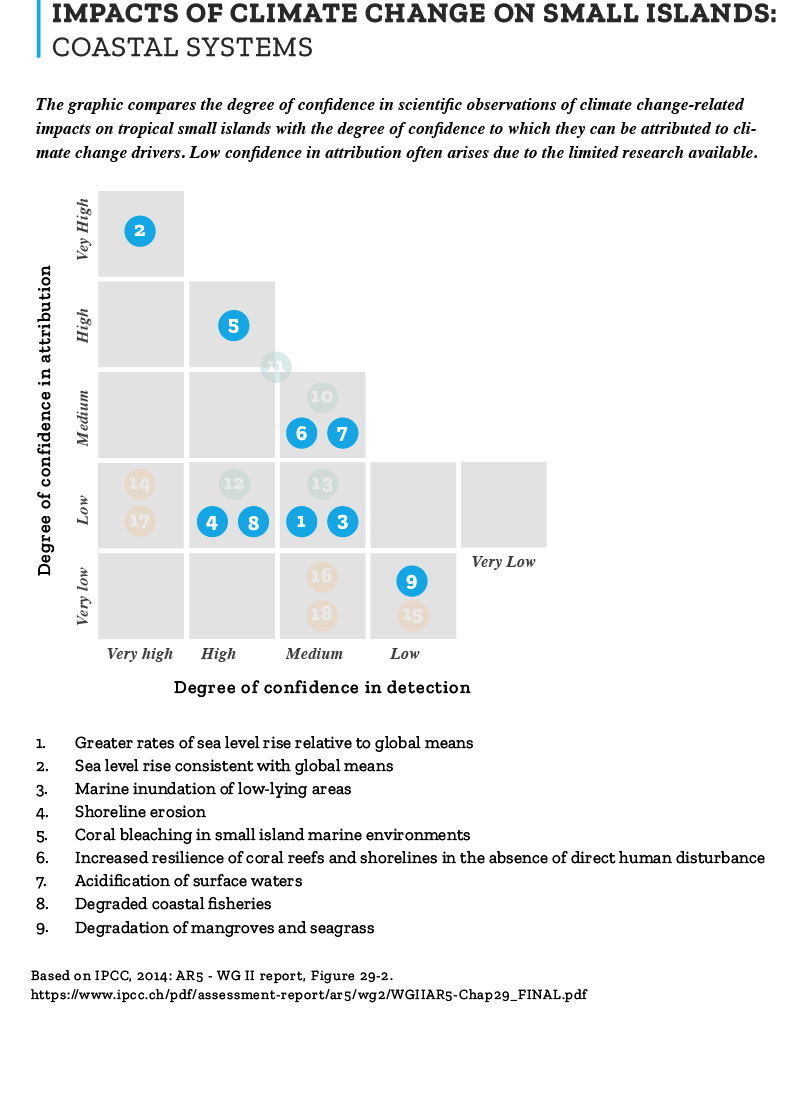
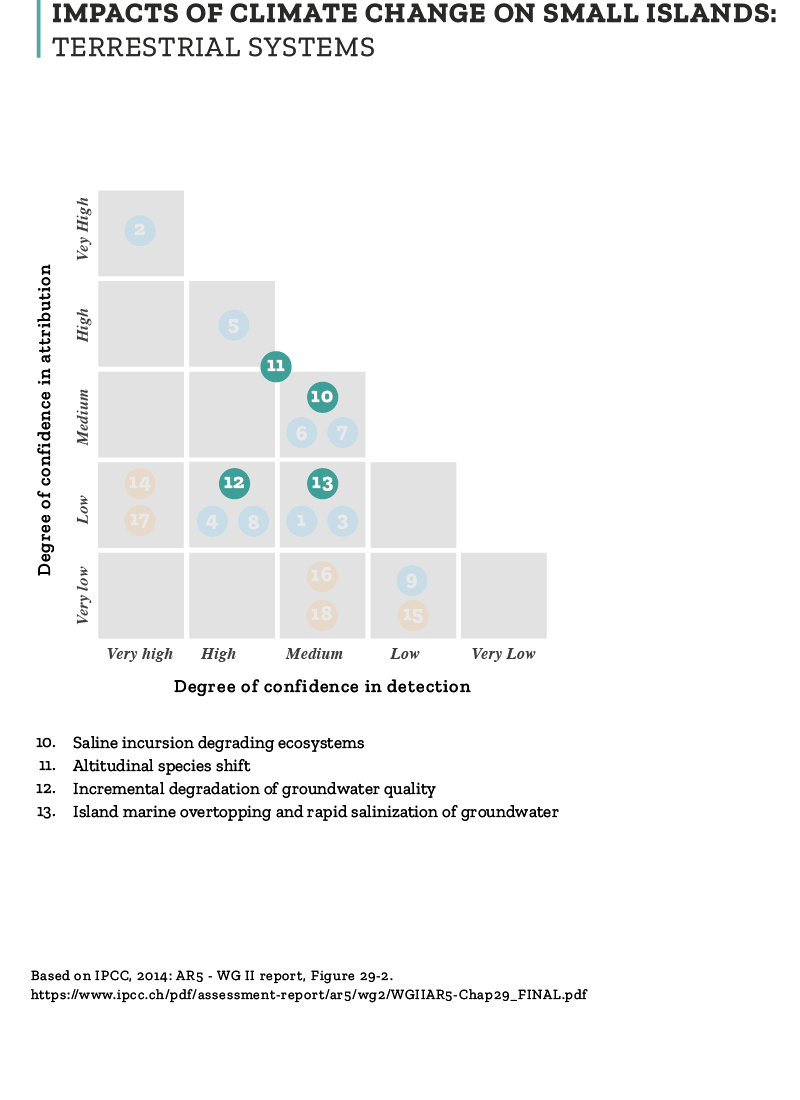

PEOPLE AGAINST PLASTIC

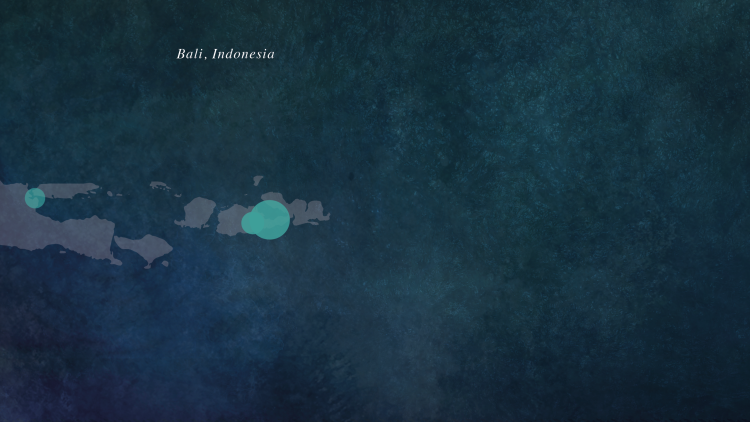
One area that has seen a "huge push", said Brown, is action to clean up plastic waste, which is polluting the oceans to the tune of 8 million to 13 million tonnes per year.
Eight million tonnes is like covering an area 34 times the size of New York's Manhattan Island to ankle-depth, according to a study by the National Center for Ecological Analysis and Synthesis at the University of California-Santa Barbara.
On the Indonesian island of Bali, tour guide Wayan Aksara joined, and later became chairman of Trash Hero Indonesia after getting a growing number of complaints from clients about rubbish on its once-pristine beaches.
The community group, which has more than 20 chapters across Indonesia and about 12 on Bali, uses social media to organise weekly garbage collection events for volunteers.
"There is a plastic problem in Bali ... We need time but we (have) started already," Aksara told the Thomson Reuters Foundation. "Big things start from small things."
On Ibiza, a Balearic island off Spain's east coast known for its clubbing scene, activists are pooling efforts to raise awareness of the growing plastic problem among its 144,000 residents and 3.25 million annual visitors.
Love Ibiza Now, one of about 20 organisations in a "Plastic Free Ibiza" alliance started in late June, is promoting beach cleans, tote bags and biodegradable straws, for instance, and recruiting villa rental agencies, restaurants and top DJs to help sell an eco-friendly approach to tourists.
"The thing that makes this do-able is the small size of the island," said Sarah Drewer, who runs online communications for Love Ibiza Now. "The message has to be really simple and without judgment."

Volunteers from Trash Hero, an environmental NGO, clean up a beach on the island of Bali, Indonesia. Thomson Reuters Foundation/handout - Trash Hero Indonesia/Wayan Aksara
Volunteers from Trash Hero, an environmental NGO, clean up a beach on the island of Bali, Indonesia. Thomson Reuters Foundation/handout - Trash Hero Indonesia/Wayan Aksara
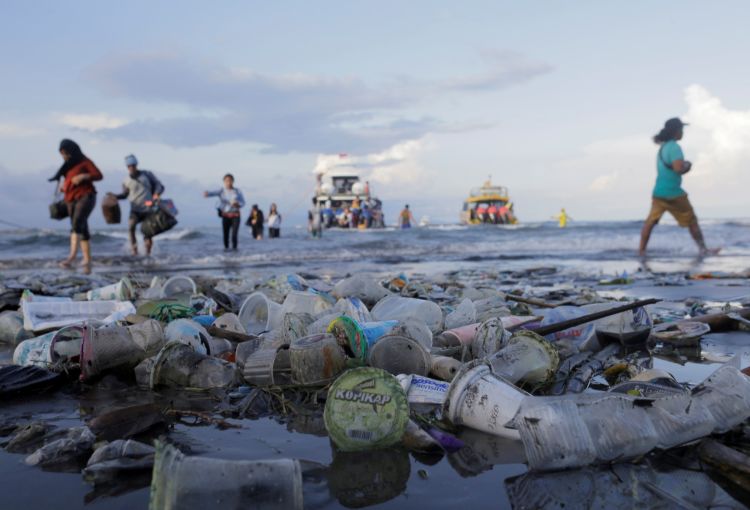
Tourists and local residents disembark a boat coming from nearby Nusa Penida island as plastic trash pollutes the beach in Sanur, Denpasar, Bali, Indonesia, April 10, 2018. REUTERS/Johannes P. Christo
Tourists and local residents disembark a boat coming from nearby Nusa Penida island as plastic trash pollutes the beach in Sanur, Denpasar, Bali, Indonesia, April 10, 2018. REUTERS/Johannes P. Christo
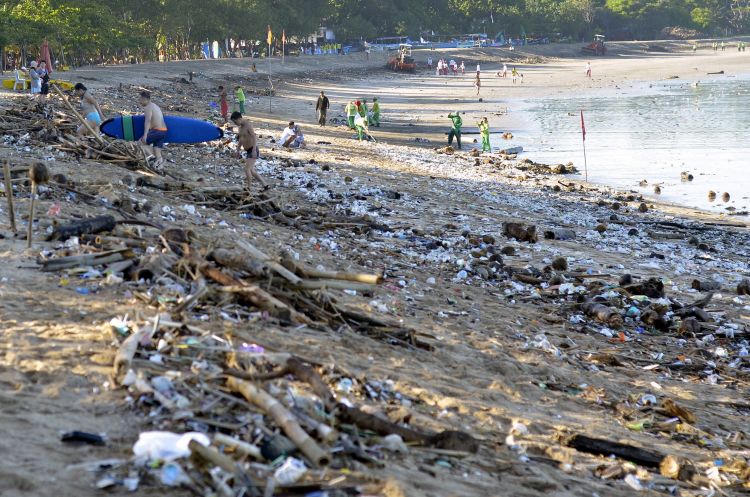
Tourists walk amongst trash washed up on Kuta beach by seasonal winds, as workers attempt a clean-up in the background, on the Indonesian island of Bali, February 15, 2016. REUTERS/Wira Suryantala/Antara Foto
Tourists walk amongst trash washed up on Kuta beach by seasonal winds, as workers attempt a clean-up in the background, on the Indonesian island of Bali, February 15, 2016. REUTERS/Wira Suryantala/Antara Foto
SMART AND SUSTAINABLE

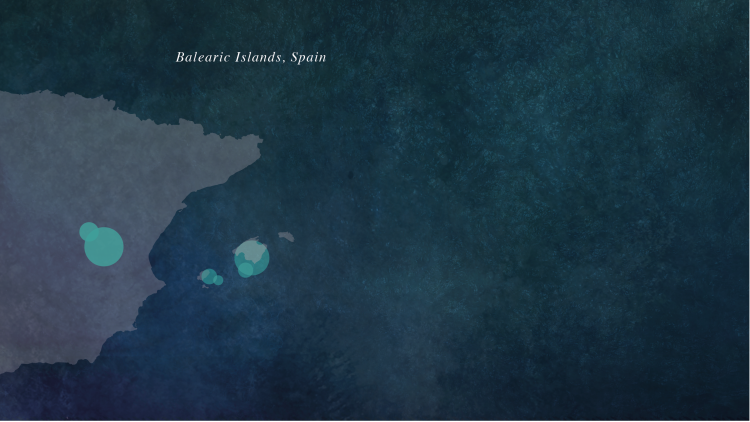
To manage scarce resources better and grow their economies cleanly, some islands are turning to smart technology and digital solutions.
On drought-prone Mallorca, another of Spain's four main Balearic islands, the small town of Esporles is experimenting with the "Internet of Things", installing sensors to monitor water consumption and help detect leaks faster.
It plans to extend its antenna-based network to check on air pollution and ease parking problems in busy summer months.
"I think the data gives us very valuable information - to analyse it and understand the next steps we need to take," said the town's 30-year-old mayor, Maria Ramon Salas.
Meanwhile, across Europe's islands, authorities are aiming to adopt renewable energy technologies to shrink the expense of providing electricity and cut their climate-changing emissions.
Energy costs on the continent's 2,400 inhabited islands are between 100 and 400 percent higher than on the mainland, Christopher Jones, senior energy advisor at the European Commission, told an April conference on "smart islands".
But in the past five years, renewables - from solar plants with battery storage to offshore wind turbines - have become cheaper, and switching to them creates jobs, he added.
"Today we have extraordinary opportunities," he said. "We are at the start of an energy revolution on islands."
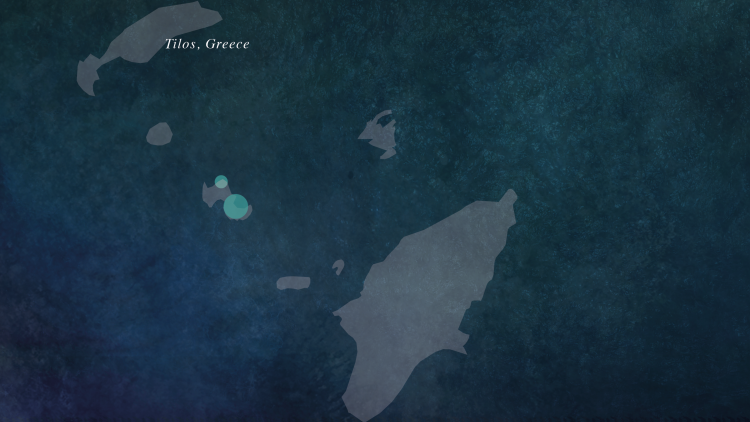
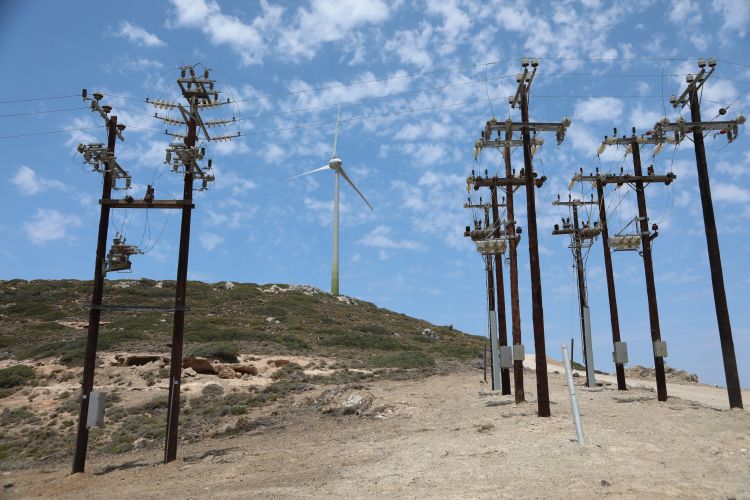
A wind turbine and electricity poles are seen on the north coast of the Greek island of Tilos, June 15, 2018. Thomson Reuters Foundation/Shanshan Chen
A wind turbine and electricity poles are seen on the north coast of the Greek island of Tilos, June 15, 2018. Thomson Reuters Foundation/Shanshan Chen

Solar panels are seen on the rooftops of houses on the Greek island of Tilos, June 15, 2018. Thomson Reuters Foundation/Shanshan Chen
Solar panels are seen on the rooftops of houses on the Greek island of Tilos, June 15, 2018. Thomson Reuters Foundation/Shanshan Chen

Hotel owner Andreas Lardopoulos poses for a portrait in front of the solar panels installed on the rooftop of his hotel on the Greek island of Tilos, June, 15, 2018. Thomson Reuters Foundation/Shanshan Chen
Hotel owner Andreas Lardopoulos poses for a portrait in front of the solar panels installed on the rooftop of his hotel on the Greek island of Tilos, June, 15, 2018. Thomson Reuters Foundation/Shanshan Chen
The tiny Greek island of Tilos, for example - which suffers regular power cuts - is betting on a new hybrid wind and solar power plant to meet its electricity needs.
Until this summer, Tilos got all its electricity from a diesel power plant on the island of Kos, 69 km (43 miles) away - which struggles to meet demand in the peak tourist season.
Mayor Maria Kamma hopes Tilos' Europe-funded push for a self-sustaining clean energy supply will go beyond keeping hotel lights on, and ensure residents "have a very good standard of living", allowing them to work there all year round, deterring young people from leaving and even enticing newcomers.
Experts say a rise in renewable energy provision on islands also could help entrepreneurs like former development worker Joanna Edghill. She and her husband set up an electric car company on the Caribbean island of Barbados five years ago.
Their business, called Megapower, has since sold 300 electric vehicles and set up 50 charging stations plus a handful of solar car-ports on the 34-km-long island - and is now expanding in the region.
Faced with high fuel import costs, "the Caribbean is ripe for the electrification of transportation", said Curtis Boodoo, an academic working on the issue with the CARICOM regional group of 15 countries.
GROW YOUR OWN

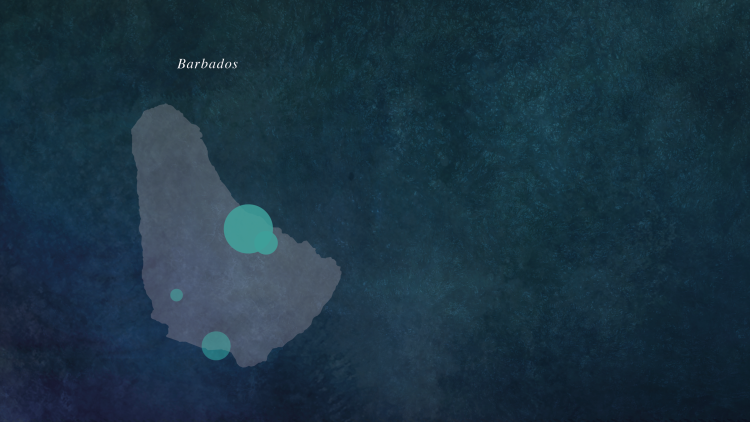
Sourcing an adequate supply of food can also send import bills sky-rocketing for islands in the Caribbean and beyond.
In many places, residents and visitors get most of their food from shipping containers, said Ian McNeel, who co-founded Slow Food Barbados, which promotes local organic produce and runs school programmes to reconnect children with farming.
Poor families in Barbados can spend up to three-quarters of their income on food, often buying low-quality imported products that contribute to bad diets driving obesity and diabetes, according to the U.N. Food and Agriculture Organization.
But some Caribbean farmers are working to reverse that trend by reviving traditional crops and sharing their knowledge, said Arno Boersma, manager of the Centre of Excellence for the Sustainable Development of Small Island Developing States.
They include award-winning Belmont Estate, a 17th-century plantation on Grenada that produces organic cocoa and spices, and runs farm tours, a restaurant and a museum, he noted.
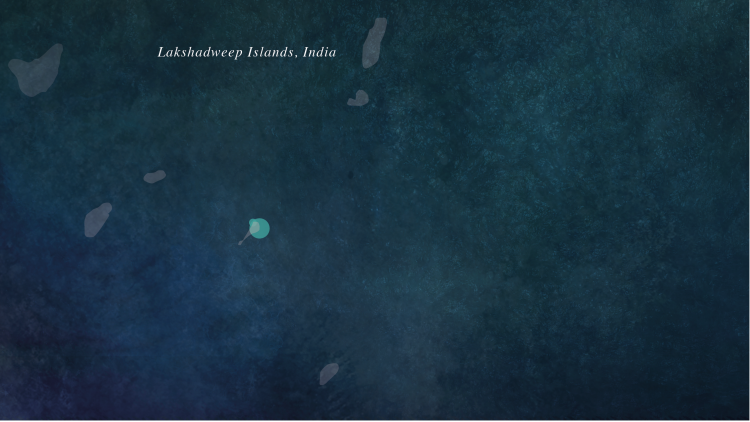
Besides a shortage of home-grown food, many islands also suffer from insufficient drinking water - but the islanders of Kavaratti, capital of the Lakshadweep archipelago, a group of 36 islands in the Arabian Sea off India, are making their own.
Once forced to use brackish water as the sea seeped into their limited groundwater supplies, they now have a locally developed desalination plant.
"The best part is that we can close our eyes and drink a glass of water without worrying about falling ill," resident Khadeeja Lavanakkal told the Thomson Reuters Foundation.
Buoyed by the project's success, the Chennai-based National Institute of Ocean Technology set up two more desalination plants on Lakshadweep islands in 2011, and is now building six more, hoping to power them in future with the ocean's energy.
REFUGEES WELCOME?


The common wisdom is that as environmental pressures worsen with climate change - making it harder to fish, farm and find clean water - some island populations might be forced to look for a new home.
In the Pacific, that has raised ethical questions about whether larger countries like New Zealand should offer humanitarian visas to so-called "climate migrants" - a policy now under consideration.
Some low-lying islands, such as Kiribati, have bought land elsewhere with a view to moving whole communities, while Choiseul Province in the Solomon Islands has plans to shift its capital to a safer location.
But in other regions, where sea level rise is less of an existential threat, some islands are seeing migrants arrive, not leave - and governments are grappling with how to handle them.
Trinidad and Tobago, for example, has received asylum requests from about 3,300 Venezuelans struggling to survive amid a political crisis and harsh recession at home, according to April data from the U.N. refugee agency (UNHCR).
Ambulance driver Miguel Vegas, 39, is seeking refugee status for himself and his family. "We just want permission to work. We want to pay taxes," he told the Thomson Reuters Foundation.
The government of the twin-island nation is working on a new asylum system, as lawyers say the current process does not meet international obligations to protect asylum seekers.
But the influx of Venezuelans is causing anxiety over whether there are enough jobs and social services to go round.
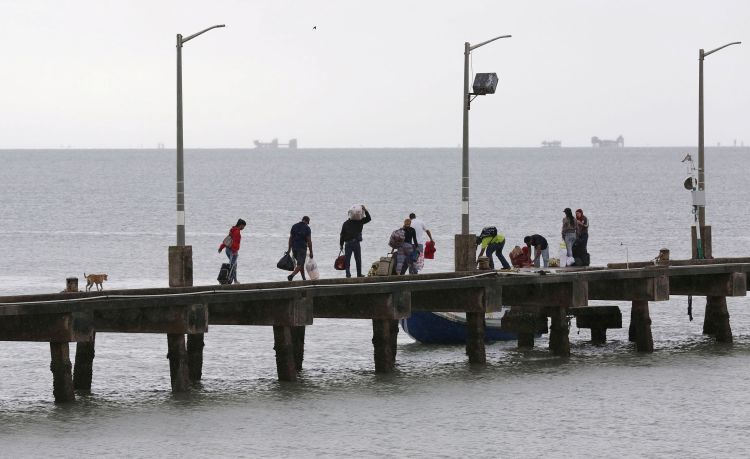
Venezuelan nationals from the city of Tucupita carry household goods that are scarce at home as they walk to board a private ferry back to their country, in the port of Cedros, southwestern Trinidad, June 8, 2016. REUTERS/Andrea De Silva
Venezuelan nationals from the city of Tucupita carry household goods that are scarce at home as they walk to board a private ferry back to their country, in the port of Cedros, southwestern Trinidad, June 8, 2016. REUTERS/Andrea De Silva

Venezuelan nationals load up a boat with goods that are scarce at home as they prepare to return to their country, in the port of San Fernando, southern Trinidad, June 17, 2016. REUTERS/Andrea De Silva
Venezuelan nationals load up a boat with goods that are scarce at home as they prepare to return to their country, in the port of San Fernando, southern Trinidad, June 17, 2016. REUTERS/Andrea De Silva
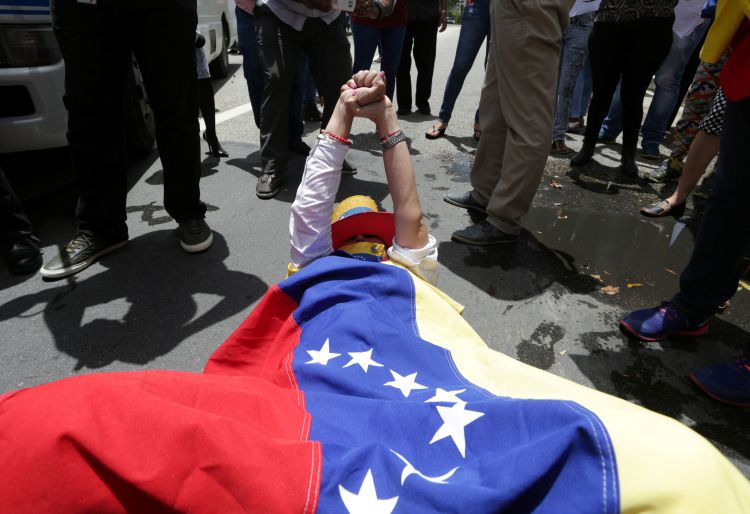
A protester covered with the Venezuelan flag lies on the street during a protest against Venezuelan President Nicolas Maduro as he meets with Trinidad and Tobago's Prime Minister Keith Rowley in Port-of-Spain, Trinidad and Tobago, May 23, 2016. REUTERS/Andrea De Silva
A protester covered with the Venezuelan flag lies on the street during a protest against Venezuelan President Nicolas Maduro as he meets with Trinidad and Tobago's Prime Minister Keith Rowley in Port-of-Spain, Trinidad and Tobago, May 23, 2016. REUTERS/Andrea De Silva
On the Greek island of Tilos, which has welcomed about 30 Syrian refugees fleeing war back home, restaurants and other businesses offer the newcomers work in the tourist season.
But there is little employment for the rest of the year.
Abdulkader Hamo, a Kurdish refugee who left Syria with his family last summer, says his children are happy on Tilos, where they go to school and are no longer afraid of air strikes.
Nonetheless, he is considering moving elsewhere.
"There is no work here. It's not great for a family," he said.
Anastasia Giannakopoulou, a social worker with Greek aid group Solidarity Now, said refugees face the same difficulties as the 550 local residents, "living in a small place", with some seeking work on other islands in winter.
The authorities are committed to creating job openings for everyone, such as a planned cheese factory using milk from island goats that will employ 15 people, including six refugees.
"This is a really sustainable and profitable business which can withstand the passing of time, and grow by adding more refugees in future," said Tilos' Mayor Kamma.
A HAND UP

"The whole business of rebuilding stronger has resonated with us, rebuilding better has resonated with us, rebuilding smarter has resonated with us."
Hugh Riley, Caribbean Tourism Organization
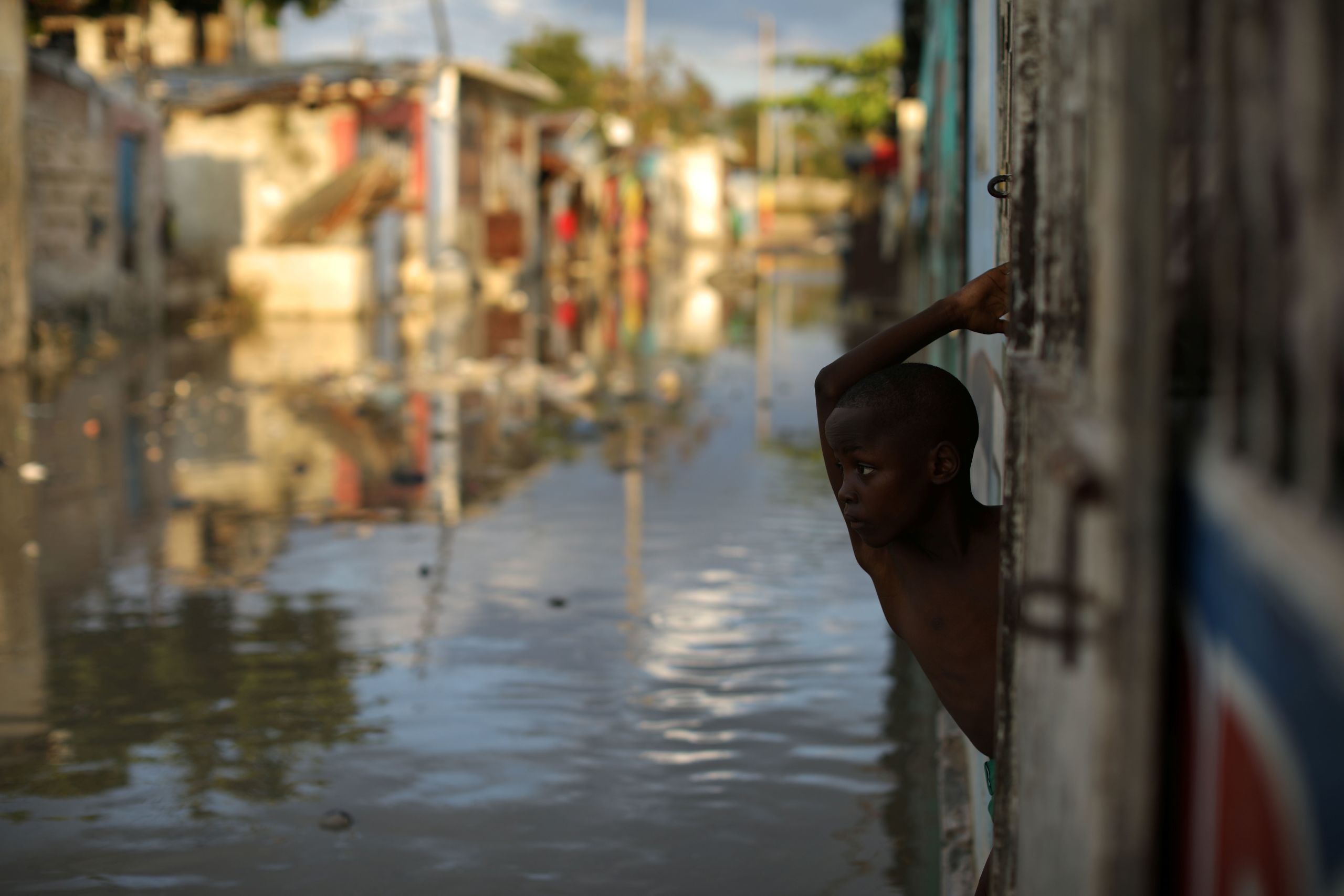
While there is no shortage of solutions to island problems, not all are moving at the same speed, creating a hunger for more knowledge and finance, experts say.
"We need to figure out how to give a hand up to those that are going to struggle," said GLISPA's Brown.
Many island treasuries, especially in the Caribbean, are massively indebted, and lack the cash to build back better after disasters or pursue a more sustainable economic model.
Some Caribbean islands are selling citizenship and passports to foreigners for chunky donations or investments.
"It's bringing in an enormous amount of money, and it's helping us to reduce our debt burden in a very serious way," said Keith Mitchell, Grenada's prime minister.
After the 2017 hurricanes, Saint Kitts and Nevis offered citizenship for a family of four in return for a $150,000 payment to a relief fund.
Those involved say vigorous vetting eliminates applicants with criminal backgrounds, on international watch lists or involved in money laundering. But analysts say security risks remain and tax loopholes are easily exploited.
Overall, islands face big hurdles in attracting donor funds and private investment, noted the World Bank's Hallegatte.
Their governments often lack the staff to prepare and sell projects to potential backers. The investment sought is often too small to appeal, and the cost of making deals and doing business is very high due to remote locations, he added.
But international development banks can help by working with islands to group diverse resilience projects and market them to investors as green bonds, Hallegatte said.
Regional insurance pools are also helping island states get quick cash to kick-start recovery after a disaster - although they have attracted more governments in the Caribbean than the Pacific so far.
Under one innovative financing model, eight Caribbean island states have set up national trust funds to protect biodiversity and manage natural resources wisely - and are putting in their own cash to match donor contributions, noted GLISPA's Brown.
Yet despite "exciting" developments, there remains a gap in securing investment on the scale required, she added.
"There's a huge amount of resources needed for islands to get to where they want to be, and also just to become more resilient to all the changes that are going on," she said.
Credits
| Reporters | Megan Rowling, Sebastien Malo, Michael Taylor, Anuradha Nagaraj, Gregory Scruggs, Isabelle Gerretsen, Sophie Hares |
| Videographers | Sebastien Malo, Shanshan Chen, Gregory Scruggs |
| Photographers | Sebastien Malo, Shanshan Chen, Michael Taylor, Megan Rowling, Nicky Milne, Sophie Hares |
| Multimedia producer | Shanshan Chen
|
| Text editors | Laurie Goering, Belinda Goldsmith |
| Video editors | Shanshan Chen, Valeria Cardi
|
| Video executive producers | Georgina Cooper, Megan Rowling
|
| Graphic designers | Teia Kay, Laura Foley |



